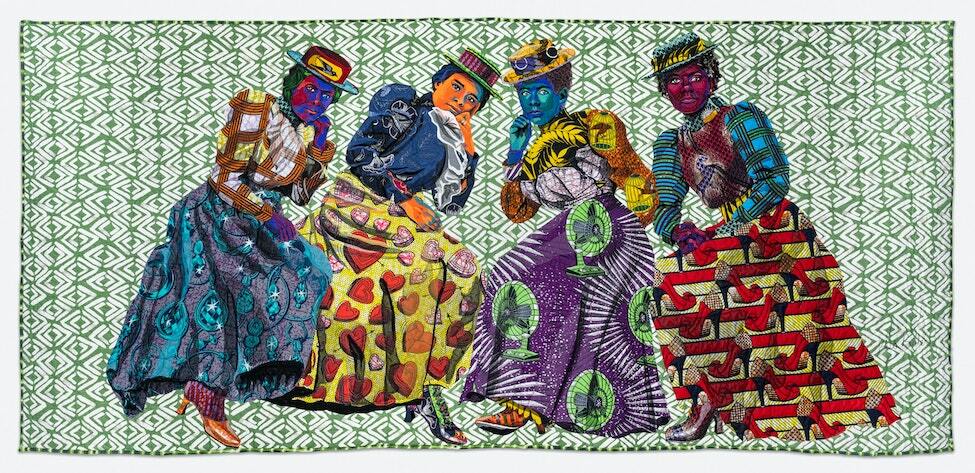Bisa Butler: Portraits
Monday, Nov 16, 2020 – Sep 6, 2021111 S. Michigan Ave.
Chicago, IL 60603

Extended through Sept 6, 2021.
Bisa Butler’s portrait quilts vividly bring to life personal and historical narratives of Black life.
She strategically uses textiles—a traditionally marginalized medium—to interrogate the historical marginalization of her subjects while using scale and subtle detail to convey her subjects’ complex individuality. Together, Butler’s quilts present an expansive view of history through their engagement with themes such as family, community, migration, the promise of youth, and artistic and intellectual legacies. Bisa Butler: Portraits is the first solo museum exhibition of the artist’s work and will include over 20 portraits.

Although Butler’s finished works are exclusively fabric, her methods remain interdisciplinary: photographs inform her compositions and figural choices, she layers fabrics as a painter might layer glazes, and she uses thread to draw, adding detail and texture. The artist’s extensive range of influences includes family photo albums, the philosophies of AfriCOBRA (the African Commune of Bad Relevant Artists), Romare Bearden’s collages, Faith Ringgold’s quilts, and Gordon Parks’s photographs.

Butler made her first portrait quilt, Francis and Violette (Grandparents), while earning a master’s degree in arts education at Montclair State University, New Jersey. Trained as a painter at Howard University in Washington, DC, Butler shifted to a textile-based practice to add vibrancy and dimension she found lacking in her paintings. Fabrics also offered her a practical way to pursue artmaking while pregnant and after her daughter was born, when oil paints and thinners proved too toxic. In turning to textiles, Butler also connected with her family history; she had learned to sew at a young age from her mother and grandmother. In revisiting these early lessons and joining them with her formal studies, she found her artistic path.